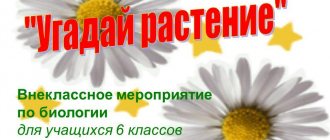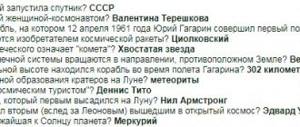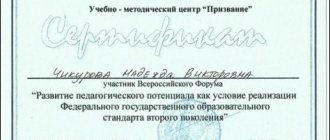Questions about music for the competition “The Smartest” (6th grade)
MBOU Shchebetovskaya school
Questions about music
for the competition "The Smartest"
(6th grade)
Music teacher: Shcheglovitova L.A.
2015
QUESTIONS FOR 6TH GRADE
1. Name the authors of the Russian Anthem (A. Aleksandrov, S. Mikhalkov)_ 2. Name the musical genres known to you. 3. Name the two main types of music (vocal, instrumental) 4. The authors of the Crimean Anthem (Alemdar Karamanov, Olga Golubeva) 5. A piece of music written for performance on musical instruments is called (instrumental music) 6. A piece of music written for performance by voice , called (vocal music) 7. Name a string instrument of a symphony orchestra (violin, viola, double bass, cello) 8. Author of the ballad song “The Forest King” (F. Schubert) 9. Name a folk musical instrument (balalaika, domra, harmonica , tambourine, wooden spoons...) 10. In what directions did music develop in Ancient Rus'? (folk and church) 11. What instrument was the main one in church music? (voice, bell) 12. Who is the author of the choral concert “Do not reject me in my old age” (Maxim Berezovsky) 13. What is sacred music? (music of a religious nature) 14. Who is the author of the symphony “Frescoes of Sophia of Kiev” (Valery Grigorievich Kikta) 15. The musical direction that appeared at the end of the 19th century, of an entertaining and entertaining nature, is called (jazz) 16. How many notes are there in music? (seven) 17. The composer of the ballets “The Sleeping Beauty”, “Swan Lake”, “The Nutcracker” is (P.I. Tchaikovsky) 18. What is the name of the leader of the orchestra? (conductor) 19. What is the main thing in ballet – music or dance? (music) 20. What do you call a person who writes music? (composer) 21. Who is the author of the “Revolutionary Etude”? (F. Chopin) 22. Which country is F. Chopin a representative of? (Poland) 23. What is a hymn (solemn song) 24. What kind of music is called chamber music? (small size, for chamber halls and orchestras) 25. A musical work written for a symphony orchestra in the form of a sonata cycle is called (symphony) 26. A small piece of an improvisational nature, usually serving as an introduction to the next piece and associated with it by a common mood, is called ( prelude) 27. Traveling musicians - actors in Ancient Rus' were called (buffoons) 28. Name foreign composers? 29. What kind of music do children like to perform? (songs) 30. A musical ensemble consisting of four performers is called a (quartet) 31. The double bass is a (string instrument of a symphony orchestra) 32. African American folk songs are called (spirituals) 33. Which composer is called a composer-storyteller? (N.A. Rimsky - Korsakov, E Grieg) 34. Name the performer of jazz vocal and instrumental music. (Louis Armstrong)
Open questions
Question 1 Who wrote the opera "War and Peace"? What is the history of this work?
Question 2 What is a serenade? What do you know about serenades?
Question 3 This stringed musical instrument of the bass and tenor register has been known since the first half of the 16th century. It has the same structure as a violin or viola, but is much larger in size. What kind of instrument is this? What is its creation story?
Question 4 This type of musical-dramatic work is based on the synthesis of words, stage action and music. Unlike dramatic theater, where music performs auxiliary functions, here it is the main carrier of action. What is the name of such a work? Which Russian composers do you know who created such works?
Question 5 You probably know that the ballet “Swan Lake” was written by Pyotr Ilyich Tchaikovsky. What can you tell us about the plot of this work?
Answers to tests
| Test | № 1 | № 2 | № 3 | № 4 | № 5 |
| Answer | A | B | B | A | IN |
| Test | № 6 | № 7 | № 8 | № 9 | № 10 |
| Answer | G | IN | IN | B | IN |
Answers to open questions
Answer to question 1: War and Peace is an opera by Sergei Prokofiev, in thirteen scenes with a choral prologue, to a libretto by the composer and Mira Mendelson-Prokofieva, based on the novel by Leo Tolstoy.
The idea for the opera appeared in the spring of 1941, even before the start of the Great Patriotic War, in parallel with work on other works. However, the outbreak of war prompted the composer to put aside all other work and come to grips with the implementation of this particular plan.
Answer to question 2: Serenade (French serenade, from Italian serenata, from sera - evening) is a musical composition performed in someone’s honor.
Serenade is a song performed for a beloved, usually in the evening or at night and often under her window. This genre was common in the Middle Ages and the Renaissance. The origin of such a serenade is the evening song of the troubadours (serena). The vocal serenade was widespread in the everyday life of the southern Romanesque peoples. The singer usually accompanied himself on lute, mandolin or guitar.
Answer to question 3: This is a cello. The appearance of the cello dates back to the beginning of the 16th century. It was originally used as a bass instrument to accompany singing or playing an instrument of a higher register. There were numerous varieties of cellos, differing from each other in size, number of strings, and tuning (most often they were tuned to a tone lower than the modern one).
Answer to question 4: This is Opera. S. S. Prokofiev, V. Ya. Shebalin, Yu. A. Shaporin, T. N. Khrennikov, I. I. Dzerzhinsky, A. V. Mosolov, D. D. Shostakovich, etc.
Answer to question 5: The plot is based on many folklore motifs, including an old German legend telling about the beautiful princess Odette, who was turned into a swan by the curse of an evil sorcerer - knight Rothbart.
The four scenes of the ballet alternate real and fantastic scenes. Celebrating his coming of age in the palace park, Prince Siegfried is having fun among his friends, but a flock of swans flying over the park beckons him along. In the forest, on the shore of the lake, among the swan girls, the prince finds Odette, the swan queen with a crown on her head. Captivated by her beauty and shocked by her story of persecution by the evil owner of the lake, Rothbart, Siegfried swears eternal love to Odette. At the ball in the castle, at the behest of Siegfried's mother, he must choose a bride for himself. However, the prince is indifferent until Odile appears, in whom Siegfried sees Odette, and he prefers her. Realizing that he has made a fatal mistake, Siegfried runs to the lake and begs Odette for forgiveness, but does not receive it. Tearing off the crown from Odette's head, Siegfried challenges Rothbart, who personifies the image of Fatum (the owner of the lake) in the ballet (the crown saved Odette from persecution). The prince hopes that the swan girl will go with him to the human world. In the fairy tale, the stormy waves of the elements raging on the lake swallow Odette and Siegfried.





